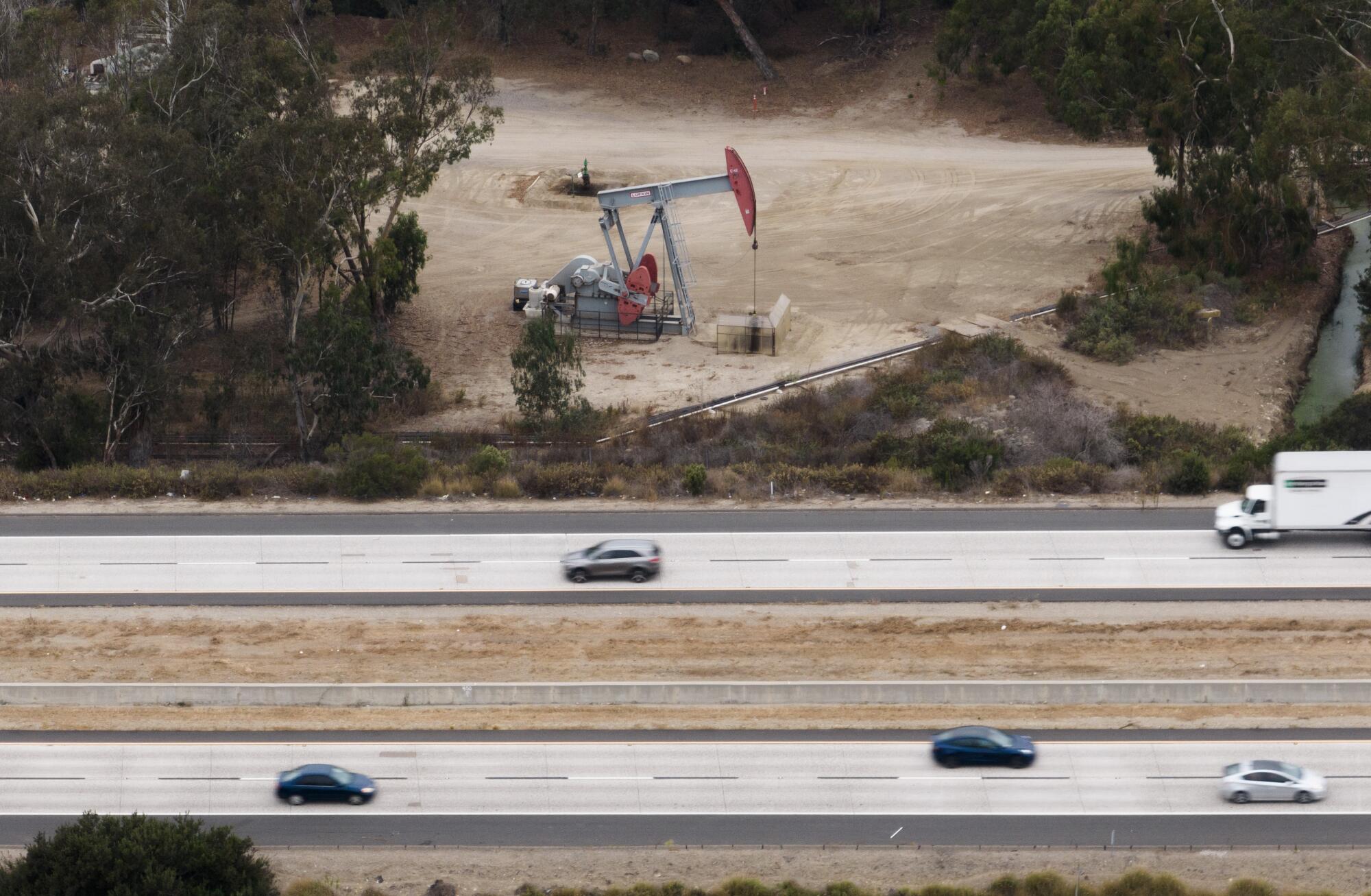
The California Department of Conservation is facing heavy criticism after it determined a colossal merger of two oil and gas companies is exempt from a state law designed to ensure depleted wells are eventually plugged.
The Orphan Wells Prevention Act — Assembly Bill 1167 — was intended to ensure that if fossil fuel companies acquired oil or gas fields, they would have to set aside more money to ensure barren or low-producing wells would be plugged. The law, signed by Gov. Gavin Newsom in October 2023, was an effort to hold fossil fuel producers accountable for eventually sealing unplugged wells throughout California — and prevent taxpayers from footing the bill if these companies go bankrupt.
The first major test case came soon after.

This February, California Resources Corp. announced its intent to buy and merge with Aera Energy in exchange for $2.1 billion in stock — a monumental deal that resulted in the state’s undisputed largest oil and gas producer. Environmental leaders initially cheered the deal, because they thought CRC would need to dedicate billions of dollars to ensure Aera’s nearly 22,000 wells would be capped.
But the state Department of Conservation’s Geologic Energy Management Division (CalGEM), which regulates oil and gas operations, concluded the law does not apply to stock transfers. David Shabazian, the outgoing director of the Department of Conservation, said the orphan wells law pertains to transactions in which there is a change in operators — not ownership.
“Publicly traded corporations, including CRC, change ownership every day as shareholders buy and sell their shares,” Shabazian wrote in a letter to the law’s author, Assemblymember Wendy Carrillo (D-Los Angeles). “None of those new corporate owners have any power to control the corporation’s assets or to operate its wells and facilities.”
Environmental groups have denounced CalGEM’s interpretation of the law, saying CRC has already discussed new plans for Aera’s wells, demonstrating its influence over their operations. They argue CalGEM’s determination means CRC must obtain, at most, a $30-million indemnity bond — an agreement in which a financial backer assumes responsibility for plugging the wells if CRC files for bankruptcy. Under the orphan well law, CRC may have had to obtain up to $2.4 billion in bonds, based on the average price to plug wells.
CalGEM “characterized it as simple stock purchase, like the equivalent of you or me buying some Apple stock, which we think is an outrageous and untenable interpretation of the law,” said Hollin Kretzmann, senior attorney at the Center for Biological Diversity. “It’s very rigid and narrow and contravening what the author and that legislature intended when they passed it.”
Minutes before first period, staff at Jordan High School in Watts reported a loud noise and a plume of smoke emanating from the metal recycling yard next door.
After a century and a half of drilling for oil and gas in California, the state is home to roughly 100,000 unplugged wells, which are known to leak planet-warming gases and toxic chemicals. As the state’s once-abundant oil deposits now produce much less crude oil, some fossil fuel companies have become insolvent, leaving plugging costs to taxpayers.
Carrillo drafted the Orphan Wells Prevention Act to remove that economic burden from taxpayers. The law requires oil companies that acquire low-producing wells to obtain a bond (a financial agreement similar to an insurance policy) that would cover the full cost of well-plugging.
“If a company is drilling for oil in California, they should be responsible for cleaning and closing that oil well,” she said. “By refusing to enforce the policy, CalGEM is setting up our state for a potential financial catastrophe. A merger of large oil companies is not a minor stock trade.
“Not enforcing this law in the case of this merger would set a terrible precedent.”

Under her law, Carrillo and others believed CRC would be financially responsible for Aera’s 9,200 idle wells and 12,500 low-producing wells. At an average cost of $112,000 per well, CRC would have needed to obtain about $2.4 billion in bonds before closing the deal.
Following the merger, CRC owns more than 40,000 wells, roughly 16,000 of which are idle. Although the wells will boost the company’s oil production, critics say they also will inflate its debt and put it at risk of defaulting.
CRC plans to inject planet-warming carbon emissions into some of these depleted wells as a part of its carbon-management business plan, according to spokesperson Richard Venn.
“In the last three years, CRC and Aera have safely plugged more than 5,000 wells and continue to plug idle wells at a faster pace than is required by law,” Venn said. “We will continue to invest significantly in our idle well management programs going forward. Importantly, our combination with Aera enhances our financial strength and all well bonding posted by CRC and Aera prior to the combination remains in place.”
The South Coast Air Quality Management District votes to require rail yard owners and operators, including BNSF Railway and Union Pacific Railroad, to aggressively reduce lung-irritating nitrogen-oxide emissions through 2050.
Environmentalists say other legislative action is necessary to speed up well-plugging. Perhaps most notably, Assembly Bill 1866, introduced by Assemblymember Gregg Hart (D-Santa Barbara), would require California’s largest oil operators, including CRC and Aera, to plug 20% of their idle wells per year.
But some environmental advocates are still calling on Newsom to take action on the laws already on the books, namely enforcing the orphan wells law on the Aera-CRC merger.
“If this is CalGEM acting as a rogue agency, then it’s time for Newsom to step in and make sure that the agencies are implementing the laws as they are written, not bending over backwards to please the oil industry,” said Kretzmann.









